Wander with this week's wild things (3 Sept)
A quiet potter along the chalk stream, with some new faces for winter.
This week, we’re back at RSPB Fowlmere, my favourite local reserve. I can’t sing its praises enough – it’s so full of life. Birds, yes, but also mammals, reptiles and invertebrates. Let’s meet some of this season’s faces!
This secretive bird is the Water Rail. You’ll find these across most of England and Wales in places that have reeds and aren’t too busy. They’re here all year, but this is a particularly good time to see them as the vegetation they usually hide in is dying back.
Listen out for a shrieking, squealing call, but be prepared to sit and wait… very patiently. They are not easy to spot! Despite being ‘green listed’ (meaning they aren’t a concern in conservation terms), most birders consider them to be a special sight.
A new visitor to keep your eyes out for in the centre of England is this charming yellow finch, the Siskin. Buckle up, because they are utterly fascinating, so I’ve lots to say! (They also happen to be one of my favourite birds.)
This is a male – he has a black cap and bib and more defined streaking and yellow colour. Apparently, the size of the bib relates to their position with the flock hierarchy. I’ve seen some males with barely any black under their beak at all, so this one might be quite an important chap.
They do live in the South and North of England, and in Scotland and Wales, year round, but in summer they’re hard to find. There’s even an old German legend that they hide a magical stone in their nest that makes them invisible during the breeding season.
This one is feeding on the seeds in the cones of an Alder tree, one of their favourite foods. Siskin’s streaky plumage and habit of feeding very high up make them difficult to spot. But they do make a delightful ‘pew, pew!’ call as they fly about in flocks, which can alert you to their presence.
Finally, they are very unusual among birds in that they do a thing called ‘allofeeding’, where subordinate adults regurgitate food for the dominant ones – the males feed males, and the females feed females. All in all, a very unusual finch.
While it’s easy to mourn the bustling boughs of leaves we’ve grown accustomed to over the past six months, the bare branches do have their benefits. Treecreepers are small, shy and brown – hard to spot in the shade of a full canopy. Not so any more.
They’re often so absorbed in their business – the business of picking bugs out of crevices – that they don’t notice you watching them. They start at the bottom of a tree and work their way up, then fly down to the bottom of the next tree and start again.
It’s also time to consider saying goodbye to your favourite invertebrates, as they may soon disappear until next year.
This striking moth is a Red Underwing. They fly from late July to the end of September, but usually land with their red ‘underwings’ hidden. When showing, it’s thought that predators might think the red section is the whole moth. If a bird was to peck just the red section, the moth would likely survive the damage and be able to fly.
The Common Darter is one of our most common dragonflies. It prefers still water – from ponds to lakes – and can be seen until November. They aren’t territorial away from breeding areas (water), so sometimes gather in large numbers to hunt across fields.
As they hunt by ambush, you might find a suitable perch with a row of Common Darters on it, all waiting for some unsuspecting prey to pass by. That is, if a Little Egret hasn’t eaten them all…
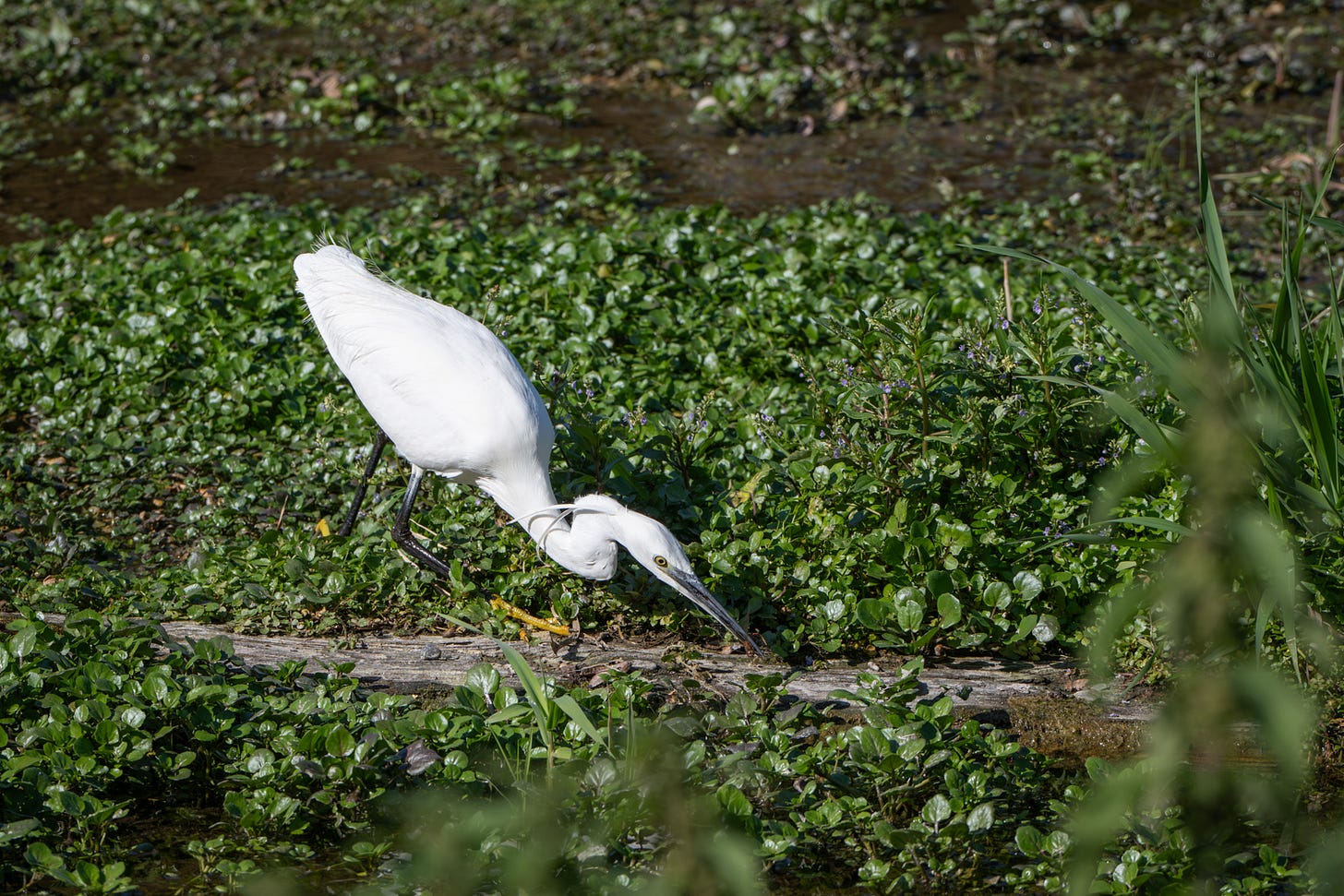
In woodlands, migrant Goldcrests are arriving from Scandinavia and Russia to join our resident birds. At this time of year, they can be found in flocks of ‘assorted tits’. I saw several small family groups in with Long-Tailed Tits this week.
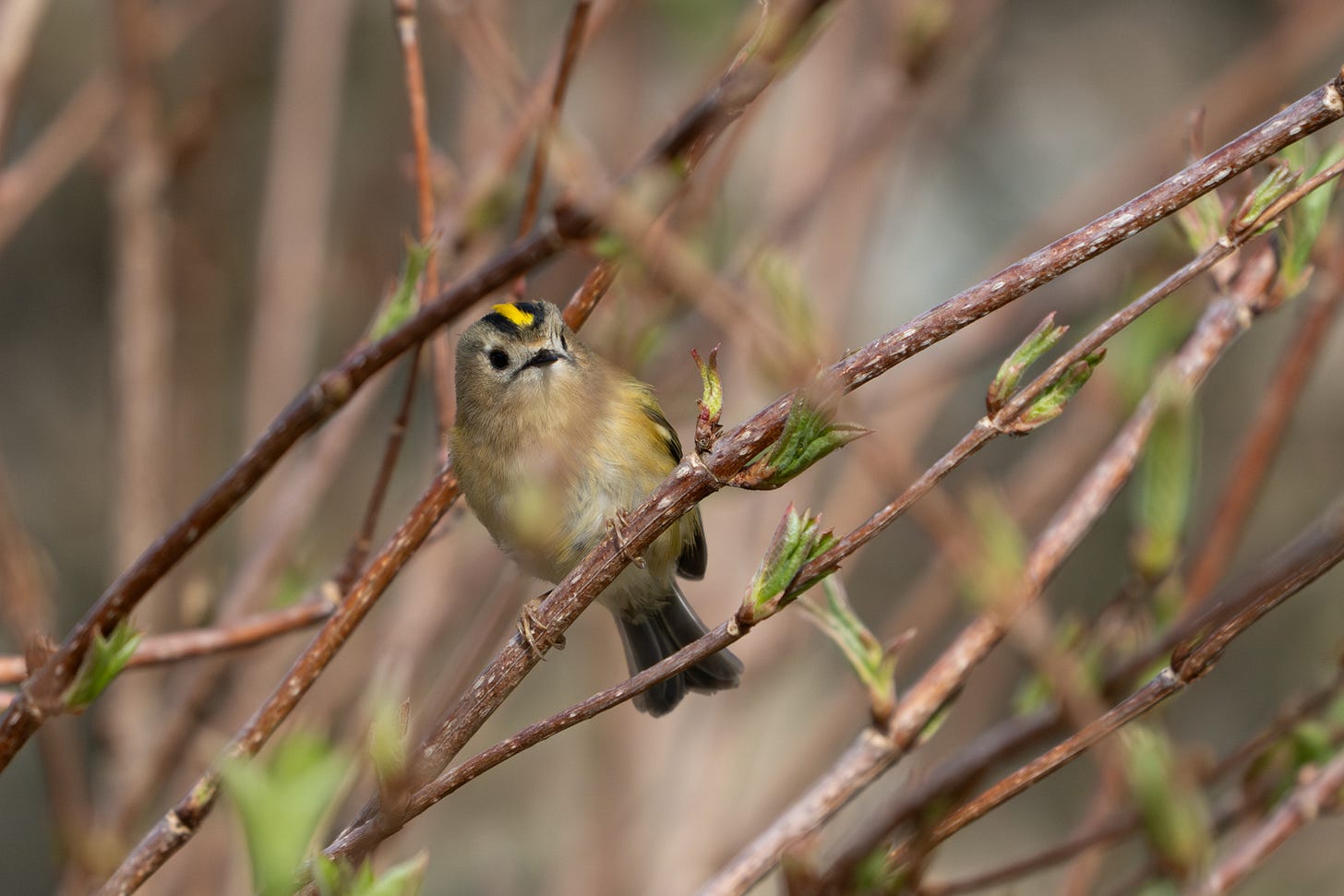
The time of their migration coincides with Woodcocks, which gave rise to the rumour that Goldcrests would catch a ride on their backs! People didn’t believe tiny Goldcrests could survive crossing the North Sea by themselves, so this was the obvious answer.
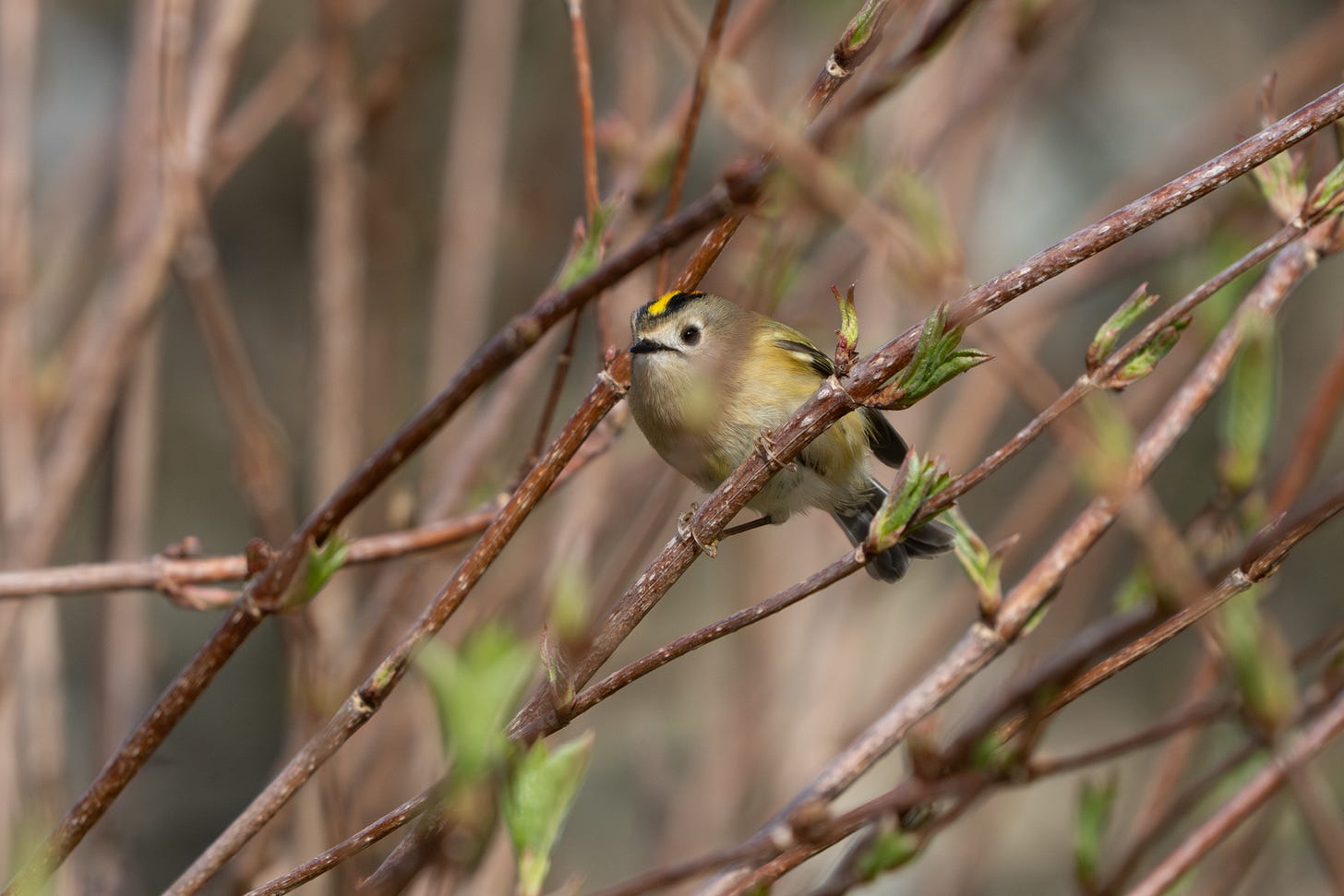
And of course, winter thrushes are due to join us over the coming weeks, too. Redwings make a thin, whining ‘seep, seep’ call, while Fieldfares are much bigger and make a kind of ‘chack-chack-chack’ call.
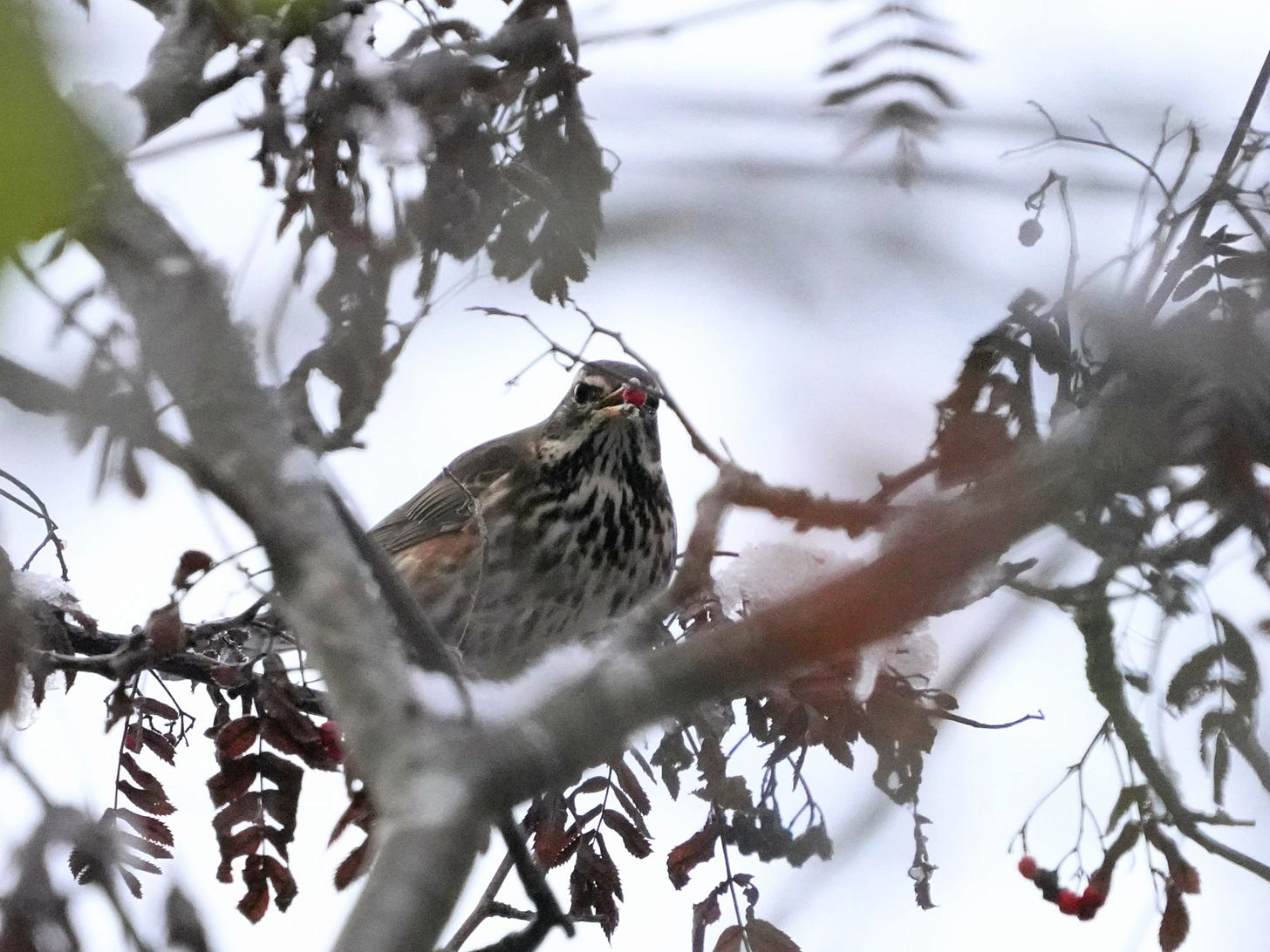
They’ll be gathering wherever there are berries to eat, from Dogwood trees to Hawthorn and Rowan (as in the photos).
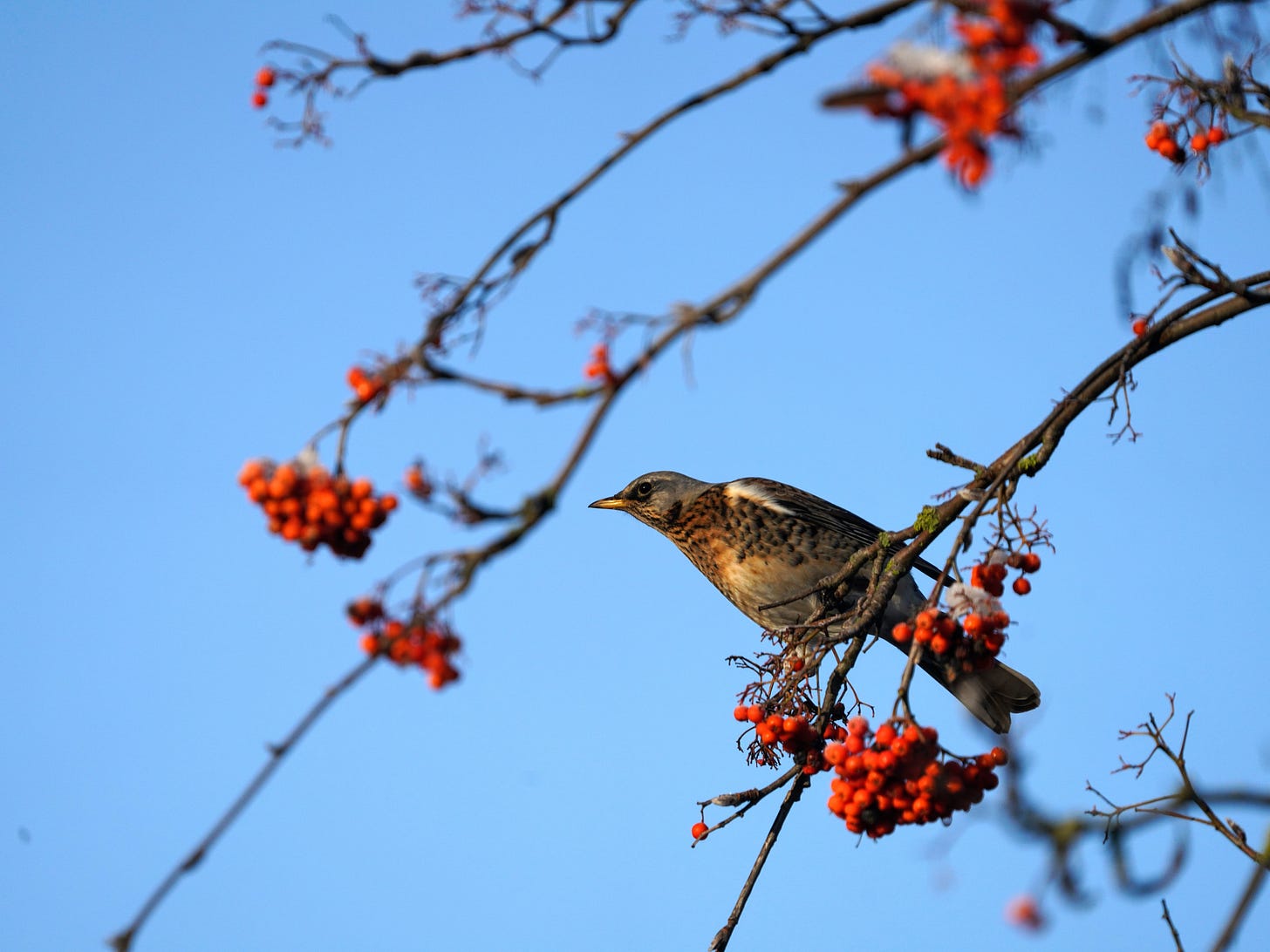
There are some birds that manage to stay hidden despite the bare branches and lack of leaves. See if you can spot the two in this photo:
The one at the top of the heap is admittedly pretty easy if you know you’re looking for it! This is a pair of Snipe, and the second one is on the lower-left of the heap of foliage. Their cryptic colouring kept them so well hidden that a marauding Moorhen almost stood on the one at the top!
That’s all for this week. I’d love to know what you’ve seen while I’ve been rustling around in the reeds (again!) – have any winter visitors appeared near you yet?
Gem









Hi Gem! I loved all of this so much. That goldcrest is adorable. And I love to learn the myths that people create around wildlife too.
Our winter geese have arrived, but I'm looking forward to the redwings and fieldfares arriving as I have a bumper crop of berries for them! The other bird that has been absent over the summer is the pied wagtail that has appeared on top of our roof in the last few days.
I loved this, especially learning about birds that are related to the birds I would commonly see in the Southeastern US. The goldcrest looks like, and is related to, our golden-crowned kinglets. The treecreeper reminded me of the brown creepers I was delighted to see in my yard and in parks last year - it was my first year with either the skill or the luck to start noticing them. And the thrushes I was comparing and contrasting with our thrushes; I can see the redwing's resemblance to American robins (which are really a thrush) because of the way young robins are spotted!